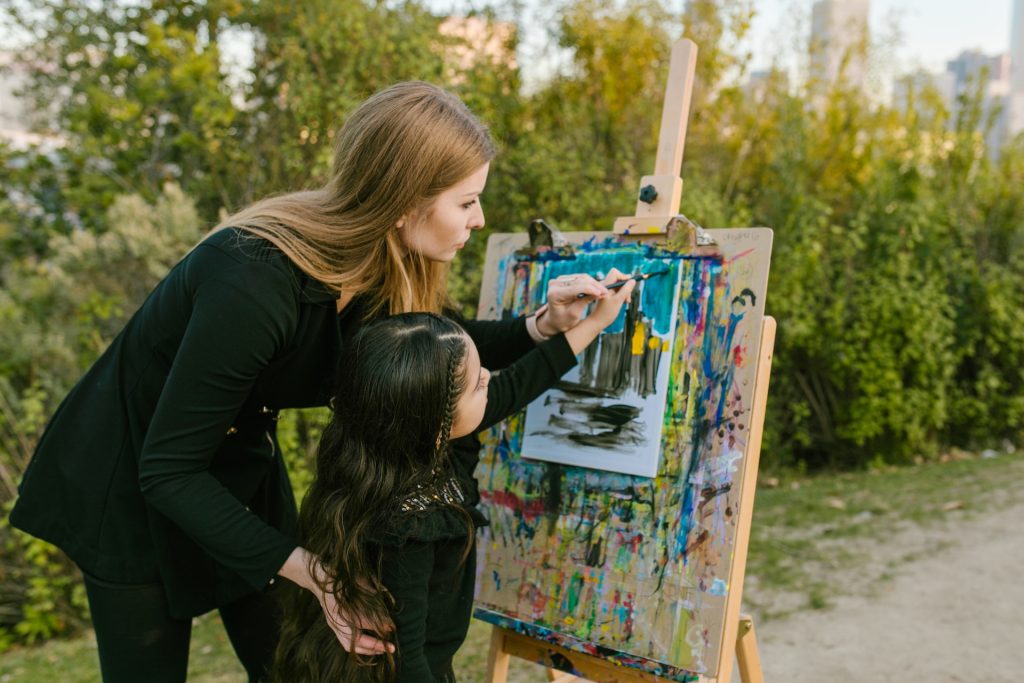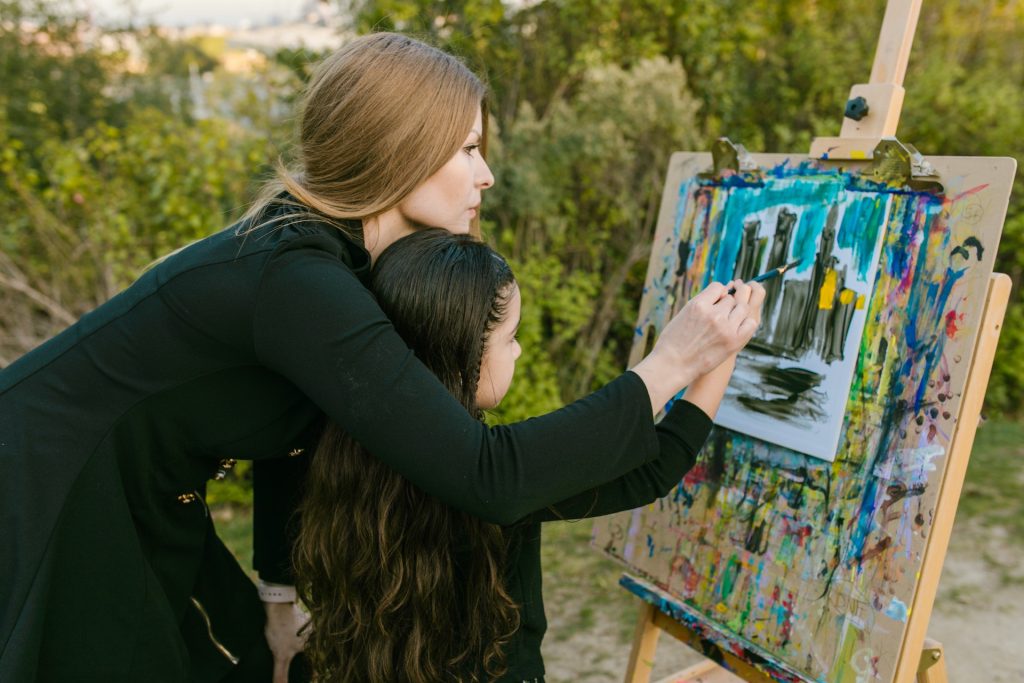Discover effective techniques and strategies for teaching painting to 7-8 year old children.
How to Teach Painting to 7-8 Year Old Children
Are you ready to embark on a colorful adventure? Teaching painting to 7-8 year old children is an exciting and rewarding experience. These budding artists are at a stage of development where their creative abilities are blooming, and with the right guidance, you can help them unleash their inner Picassos. In this article, we will explore various strategies to make painting lessons enjoyable and educational for this age group. So grab your paintbrushes and let’s get started!
Understanding the Artistic Abilities of 7-8 Year Olds

Before diving into the world of painting, it’s important to understand the unique artistic abilities of 7-8 year olds. At this stage, children have developed cognitive and physical skills that allow them to express themselves creatively through art.
7-8 year olds are at a crucial stage in their artistic development. Their cognitive abilities have blossomed, and they enjoy exploring complex ideas and concepts. They have a natural curiosity and a thirst for knowledge, making them eager to learn and experiment with different artistic techniques. Encourage their imagination by discussing different themes and ideas for their artwork. Ask open-ended questions to stimulate their thinking and encourage thoughtful responses. This will not only enhance their artistic skills but also foster critical thinking.
In addition to their cognitive development, 7-8 year olds have also made significant progress in their physical abilities. They have gained better control over their fine motor skills, making it easier for them to handle painting tools such as brushes. This newfound dexterity allows them to create more intricate and detailed artwork. It’s important to provide them with a variety of painting tools and materials to explore. Allow them to experiment with different brush sizes and textures to create a variety of strokes. This will help them develop their technique and explore the possibilities of their newfound abilities.
Furthermore, 7-8 year olds are becoming more aware of their surroundings and are able to observe and replicate the world around them with greater accuracy. Encourage them to observe nature, people, and objects in their environment and incorporate these elements into their artwork. This will not only enhance their observational skills but also allow them to develop their own unique artistic style.
It’s important to provide a supportive and nurturing environment for 7-8 year olds to explore their artistic abilities. Display their artwork proudly and provide positive feedback to boost their confidence. Encourage them to experiment with different art mediums, such as watercolors, acrylics, or even mixed media. This will allow them to discover their preferences and expand their artistic horizons.
In conclusion, 7-8 year olds have developed cognitive and physical skills that enable them to express themselves creatively through art. By fostering their imagination, encouraging critical thinking, and providing them with the necessary tools and materials, we can help them unleash their artistic potential and embark on a lifelong journey of self-expression.
Setting Up the Perfect Environment for Painting
The right environment can make a world of difference when it comes to nurturing the creativity of young artists. A well-prepared space will inspire their imagination and provide a safe place for them to explore their artistic talents.
Imagine walking into a room filled with colors, brushes, and the smell of creativity in the air. This is the kind of environment that can truly ignite a child’s passion for painting. But it’s not just about having the right art supplies; it’s also about creating a safe and inspiring space that will encourage their artistic journey.
Choosing the Right Art Supplies
Stock your art corner with a wide range of art supplies to ignite their creativity. Ensure you have a variety of paint colors, watercolor paper, and different brushes to cater to their artistic preferences. Having a diverse selection of materials will allow them to experiment and discover their own unique style.
Imagine a shelf filled with tubes of paint in every color of the rainbow. From vibrant reds to calming blues, the possibilities are endless. And don’t forget about the brushes! Different brushes can create different textures and effects on the canvas. Some brushes are thick and bold, perfect for creating bold strokes, while others are thin and delicate, ideal for intricate details.
Watercolor paper is a must-have for any young artist. Its texture allows the paint to glide smoothly, creating beautiful washes of color. It’s also important to have different sizes of paper available, from small postcard-sized sheets to larger canvases. This way, they can choose the size that suits their artistic vision.
Creating a Safe and Inspiring Space
Make the art area visually appealing by displaying vibrant artwork and providing natural light. Hang up posters of famous masterpieces or create a gallery of their own artwork. This will inspire and encourage their creativity while fostering a love for art.
Imagine walking into the art space and being greeted by a wall filled with colorful paintings. Each stroke tells a story, and each artwork is a testament to the child’s imagination. By displaying their own artwork, you are showing them that their creations are valued and appreciated.
Natural light is essential for any artist. It not only provides the perfect lighting for their work but also creates a calming and soothing atmosphere. Position their art corner near a window, allowing the sunlight to stream in and illuminate their creations. This connection with nature can inspire them to explore the beauty of the world around them.
Additionally, consider adding comfortable seating and a small table to the art area. This will provide a dedicated space for them to work on their masterpieces, allowing them to fully immerse themselves in the creative process. A cozy chair or cushion can make all the difference in creating a welcoming and inviting space.
Introducing Basic Painting Techniques
Now that we have set up the perfect environment, it’s time to dive into the exciting world of painting techniques. Introduce them to the basics and watch their imaginations soar!
Before we begin, let’s take a moment to appreciate the beauty and versatility of painting. It is a form of art that has been cherished for centuries, allowing artists to express their emotions, tell stories, and capture the essence of the world around them.
Now, let’s explore some of the fundamental techniques that will help your young artists unleash their creativity:

Brushwork Basics
Show them different brush techniques like broad strokes, stippling, and blending. Encourage them to experiment with various brush sizes and pressure to create different effects. Let them explore the magic of brushwork firsthand.
Imagine the feeling of a soft bristle brush gliding smoothly across the canvas, leaving behind vibrant strokes of color. Broad strokes can create bold and expressive marks, while stippling, which involves using small dots or dashes, can add texture and depth to their artwork. And when it comes to blending, they can discover the art of seamlessly merging colors together, creating smooth transitions and gradients.
As they experiment with these techniques, they will begin to understand the power of the brush and how it can bring their visions to life.
Mixing Colors
Teach them the art of color mixing. Show them how primary colors can be combined to create new shades and hues. Allow them to explore color combinations and create a color wheel of their own. This will not only enhance their understanding of colors but also add a splash of creativity to their artwork.
Imagine the joy on their faces as they discover that by mixing blue and yellow, they can create a vibrant green. Or that by combining red and yellow, they can achieve a warm and fiery orange. The possibilities are endless, and their artwork will come alive with a whole new range of colors.
Encourage them to experiment with different ratios of color, from subtle tints to bold and intense shades. Let them explore the world of complementary colors, where opposites attract and create a striking contrast on the canvas. By understanding the principles of color mixing, they will have a powerful tool at their disposal, allowing them to create mood, depth, and harmony in their artwork.
So, let their imagination run wild as they embark on this colorful journey of painting techniques. With brushwork basics and the art of color mixing in their repertoire, they will be well-equipped to create stunning masterpieces that reflect their unique artistic vision.
Planning Engaging Art Lessons
Now that they have mastered the basics, let’s plan some engaging art lessons that will keep their creativity flowing.
Thematic Art Projects
Choose a theme for their art projects, such as animals, nature, or fantasy. Provide them with references and encourage them to add their own personal touch. This will not only engage their imagination but also enable them to develop a cohesive body of artwork.
For example, if the theme is animals, you can introduce them to different art styles and techniques used to depict animals. Show them examples of famous animal paintings or sculptures, and discuss how artists have represented animals throughout history. Encourage them to experiment with different mediums, such as watercolors, acrylics, or clay, to create their own unique animal-inspired artwork.
Additionally, you can take them on a field trip to a local zoo or wildlife sanctuary to observe animals in their natural habitats. This will not only provide them with firsthand inspiration but also deepen their understanding of the subject matter.
Incorporating Storytelling in Art
Combine their love for storytelling with their artistic abilities. Encourage them to create artwork that tells a story. Let them illustrate scenes from a favorite book or come up with their own imaginative tales. This will help them develop narrative skills while expressing themselves through art.
To further enhance their storytelling skills, you can introduce them to different narrative structures and techniques used in art. Teach them about composition, perspective, and color theory to create visually compelling narratives. Discuss the elements of a story, such as characters, setting, and plot, and guide them in incorporating these elements into their artwork.
Furthermore, you can organize a storytelling session where each student presents their artwork and shares the story behind it. This will not only boost their confidence in public speaking but also foster a sense of community and appreciation for each other’s work.
Encouraging Creativity and Expression
While learning the technical aspects of painting is important, it’s equally crucial to nurture their creativity and encourage self-expression.
Fostering a Positive Attitude Towards Art
Encourage a positive mindset by praising their efforts and focusing on the process rather than the final result. Emphasize that art is about self-expression and enjoyment rather than achieving perfection. This will boost their confidence and inspire them to push their creative boundaries.
Guiding Children to Express Themselves Through Art
Art is a powerful medium for self-expression. Encourage children to use art as a way to communicate their thoughts and emotions. Encourage them to explore different art forms and experiment with different techniques. Create a space where they feel safe to express themselves freely and without judgment. This will empower them to use art as a tool for self-discovery and personal growth.
So there you have it, a guide to teaching painting to 7-8 year old children. By understanding their unique abilities, providing the perfect environment, introducing basic techniques, planning engaging lessons, and nurturing their creativity and self-expression, you will have the privilege of witnessing their artistic talents blossom. Get ready to be amazed by the masterpieces they create!



